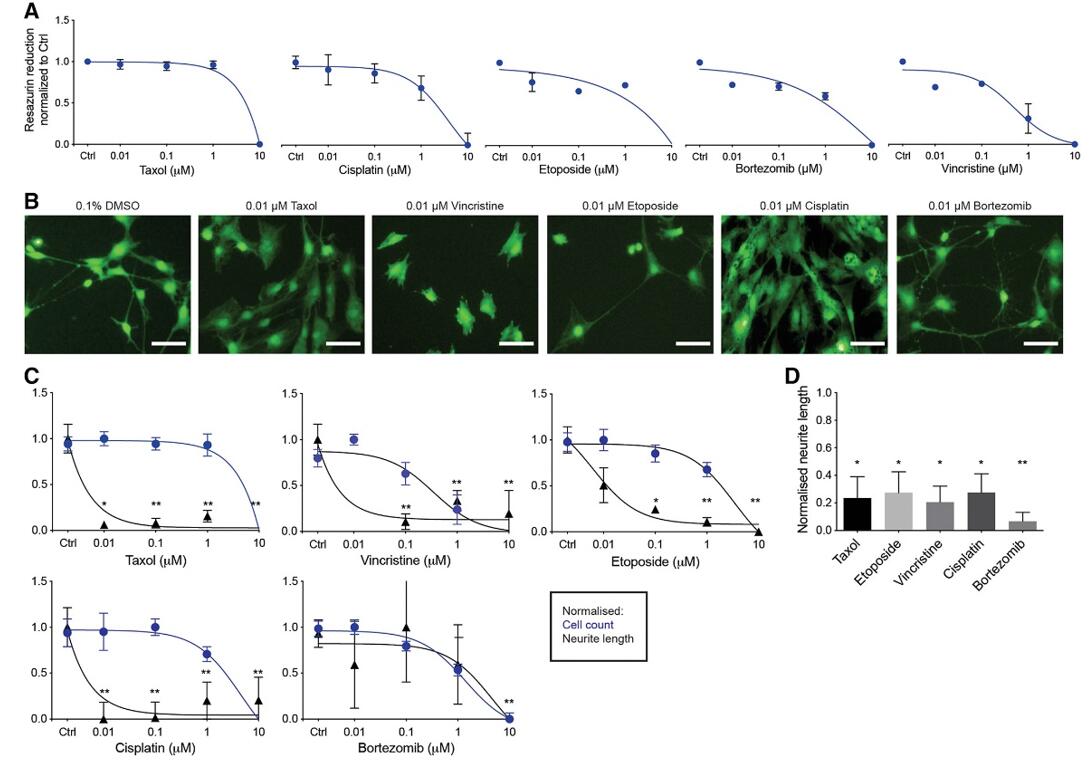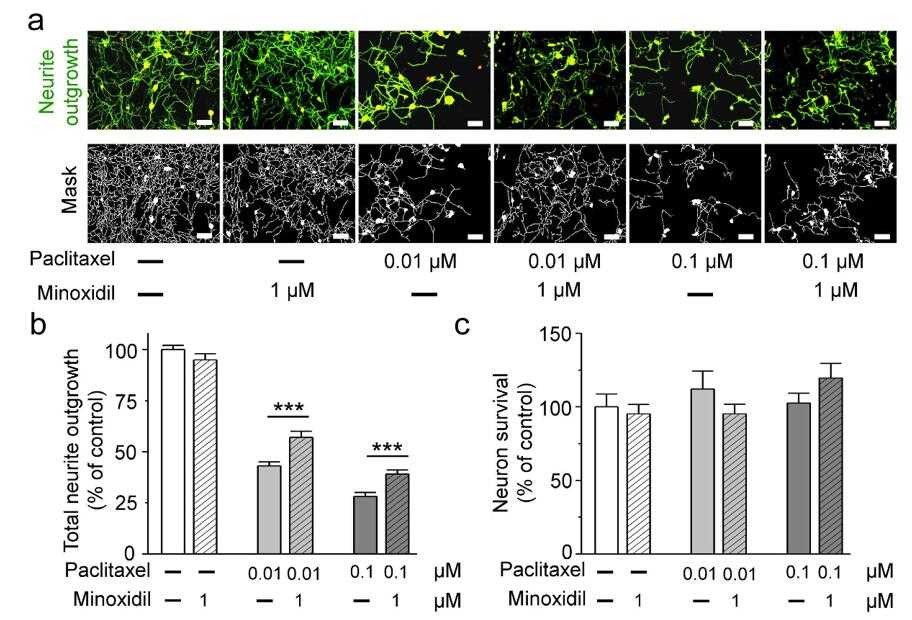Chemotherapy-induced peripheral neuropathy (CIPN) is a common and potentially debilitating side effect of chemotherapy drugs, affecting up to 70% of patients receiving chemotherapy. CIPN is characterized by damage to the peripheral nerves, leading to symptoms such as numbness, tingling, pain, and weakness in the hands and feet.
 Figure 1. Chemotherapy-induced peripheral neurotoxicity [1]
Figure 1. Chemotherapy-induced peripheral neurotoxicity [1]
To study CIPN in a cellular model, researchers can utilize various types of cells that represent different components of the peripheral nervous system. One common approach is to use primary sensory neurons isolated from rodent models or human tissues. These neurons can be cultured in vitro and exposed to chemotherapy drugs such as paclitaxel or cisplatin to assess their effects on neuronal viability, morphology, and function. In addition, co-culture systems can be established to mimic the interactions between neurons and other cell types in the peripheral nervous system, such as Schwann cells or immune cells. This allows researchers to study the complex signaling pathways involved in CIPN pathogenesis and identify potential therapeutic targets for intervention.
 Figure 2. Assessment of various chemotherapy compounds in the induced sensory neurons (iSNs).[2]
Figure 2. Assessment of various chemotherapy compounds in the induced sensory neurons (iSNs).[2]
Creative Bioarray's use of cellular models for CIPN offers important insights into the mechanisms behind chemotherapy-induced peripheral neuropathy. This platform is instrumental in developing innovative treatment approaches to alleviate this disabling side effect of cancer therapy.
Study Examples:
 Figure 3. The neuroprotective effects of minoxidil on the neurite outgrowth of dorsal root ganglion (DRG) neurons.[3]
Figure 3. The neuroprotective effects of minoxidil on the neurite outgrowth of dorsal root ganglion (DRG) neurons.[3]
References:
1. Park, Susanna B et al. "Chemotherapy-induced peripheral neurotoxicity: a critical analysis." CA: a cancer journal for clinicians vol. 63,6 (2013): 419-37. doi:10.3322/caac.21204
2. Vojnits, Kinga et al. "Chemotherapy-Induced Neuropathy and Drug Discovery Platform Using Human Sensory Neurons Converted Directly from Adult Peripheral Blood." Stem cells translational medicine vol. 8,11 (2019): 1180-1191. doi:10.1002/sctm.19-0054
3. Chen, Yi-Fan et al. "Minoxidil is a potential neuroprotective drug for paclitaxel-induced peripheral neuropathy." Scientific reports vol. 7 45366. 28 Mar. 2017, doi:10.1038/srep45366
Online Inquiry